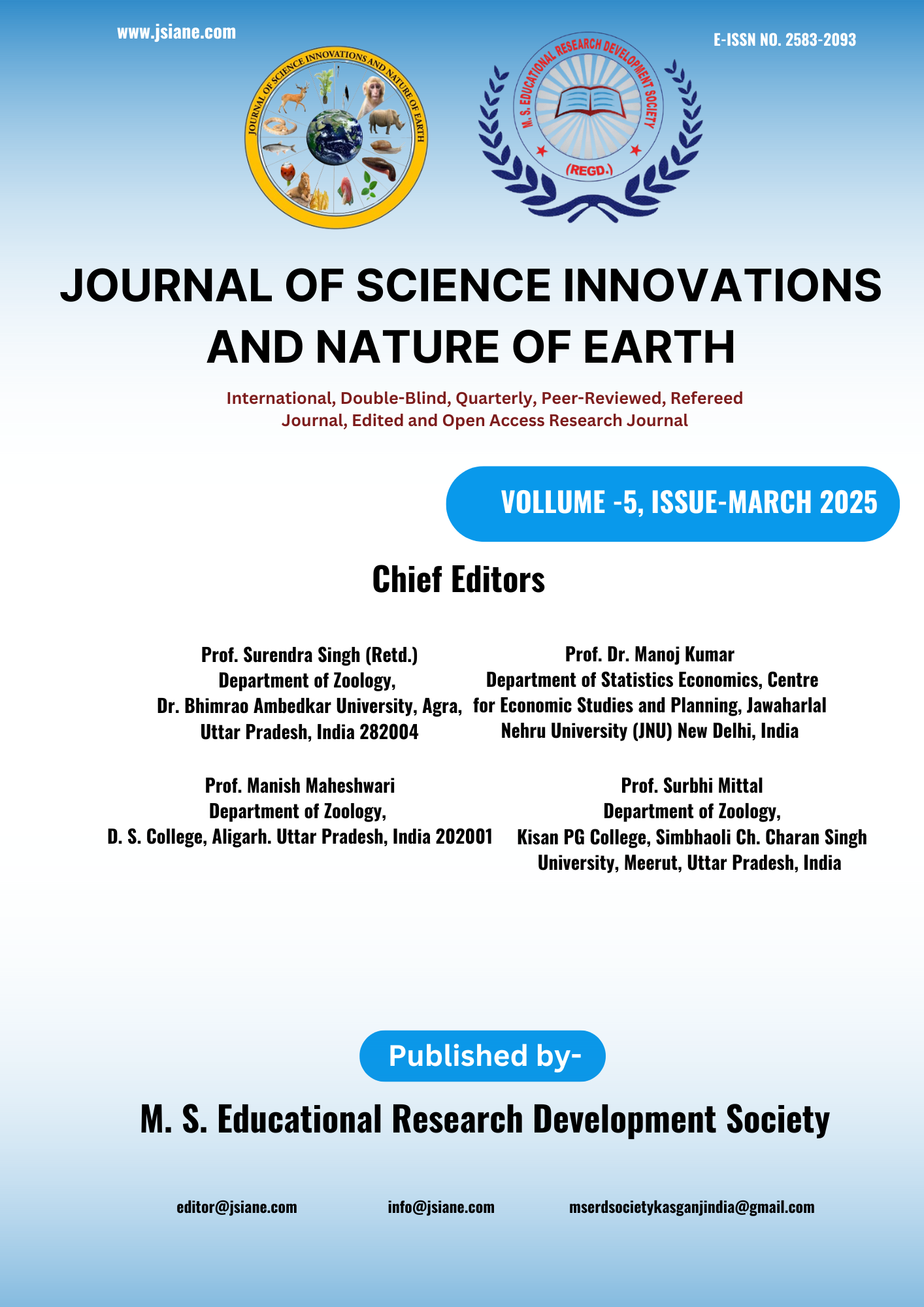Impact of Light Pollution on Moth Navigation
DOI:
https://doi.org/10.59436/jsiane.370.2583-2093Keywords:
Light pollution, Moths, Navigation, Pollination, BiodiversityAbstract
Moths are vital nocturnal pollinators whose navigational systems are finely tuned to natural light cues such as the moon and stars. However, the rapid proliferation of artificial light sources due to urbanization—commonly referred to as light pollution—has severely disrupted these natural behaviors. This research paper explores the detrimental impact of artificial light at night (ALAN) on moth navigation through both field experiments and a comprehensive literature review. Our findings reveal that artificial lighting, particularly in the blue and white light spectrum, causes significant disorientation in moth flight paths, reduces their ability to locate mates and forage for nectar, and ultimately hampers pollination processes. These disruptions not only threaten moth populations but also compromise the ecological networks dependent on their pollination services, including nocturnal flowering plants and species that rely on them for food. The study highlights species-specific vulnerabilities, the ecological consequences of decreased pollination, and proposes mitigation strategies such as the use of red-spectrum lighting and reduced night-time illumination. Overall, the paper emphasizes the urgent need for environmentally conscious lighting practices to preserve nocturnal biodiversity and maintain ecological balance.
References
Kyba, C. C. M., et al. (2017). Artificially lit surface of Earth at night increasing in radiance and extent. Science Advances, 3(11), e1701528. https://doi.org/10.1126/sciadv.1701528
Warrant, E. J., & Dacke, M. (2011). Vision and visual navigation in nocturnal insects. Annual Review of Entomology, 56, 239–254. https://doi.org/10.1146/annurev-ento-120709-144840
van Langevelde, F., et al. (2011). Effect of spectral composition of artificial light on the attraction of moths. Biological Conservation, 144(9), 2274–2281. https://doi.org/10.1016/j.biocon.2011.06.004
Macgregor, C. J., Pocock, M. J. O., Fox, R., & Evans, D. M. (2017). Pollination by nocturnal Lepidoptera, and the effects of light pollution: A review. Ecological Entomology, 42(4), 400–408. https://doi.org/10.1111/een.12374
Longcore, T., & Rich, C. (2004). Ecological light pollution. Frontiers in Ecology and the Environment, 2(4), 191–198. https://doi.org/10.1890/1540-9295(2004)002[0191:ELP]2.0.CO;2
Owens, A. C. S., Cochard, P., Durrant, J., Farnworth, B., Perkin, E. K., & Seymoure, B. (2020). Light pollution is a driver of insect declines. Biological Conservation, 241, 108259. https://doi.org/10.1016/j.biocon.2019.108259
Firebaugh, A., & Haynes, K. J. (2016). Experimental tests of light-pollution impacts on nocturnal insect courtship and dispersal. Oecologia, 182(4), 1203–1211. https://doi.org/10.1007/s00442-016-3735-5
Grubisic, M., & van Grunsven, R. H. A. (2024). Global assessment of ecological impacts of artificial light at night on insects. Annual Review of Entomology, 69, 1–22. https://doi.org/10.1146/annurev-ento-042423-014923
Desouhant, E., Mondy, N., & Chardonnet, L. (2023). Artificial light at night: A multidimensional stressor for insects. Functional Ecology, 37(1), 1–14. https://doi.org/10.1111/1365-2435.14169
Dreissigacker, K., Lang, D., & Schütz, S. (2022). Flight trajectory disruption in moths by artificial light: A radar-based field study. Journal of Insect Behavior, 35(2), 85–97. https://doi.org/10.1007/s10905-022-09793-2
Knop, E., Zoller, L., Ryser, R., Gerpe, C., Hörler, M., & Fontaine, C. (2017). Artificial light at night as a new threat to pollination. Nature, 548(7666), 206–209. https://doi.org/10.1038/nature23288
Lee, M., & Dombeck, D. A. (2024). Urban evolution and the behavioral adaptation of moths to artificial light. Ecology and Evolution, 14(3), e10824. https://doi.org/10.1002/ece3.10824
Owens, A. C. S., & Lewis, S. M. (2021). The impact of artificial light at night on nocturnal insects: A review and synthesis. Ecology and Evolution, 11(4), 1557–1576. https://doi.org/10.1002/ece3.7139
Rowse, E. G., Harris, S., & Jones, G. (2023). Mitigating the impacts of artificial lighting on wildlife: Practical guidance for urban planning. Urban Ecology and Conservation, 12(1), 101–117.
van Grunsven, R. H. A., van Deijk, J. R., Donners, M., Berendse, F., & Veenendaal, E. M. (2020). Behavioral responses of moth species to different wavelengths of artificial light. Biological Conservation, 241, 108326. https://doi.org/10.1016/j.biocon.2019.108326
Verheijen, F. J. (1958). The mechanisms of the attraction of nocturnal insects to light. Archives Néerlandaises de Zoologie, 13(1), 1–107. https://doi.org/10.1163/187530158X00010
Wearn, O. R., Parry, L., Barlow, J., & Struebig, M. J. (2023). Nocturnal insect diversity in urban forest fragments under artificial lighting gradients. Journal of Applied Ecology, 60(1), 43–53. https://doi.org/10.1111/1365-2664.14261
Downloads
Published
Issue
Section
License
Copyright (c) 2025 Maharaj Singh Educational Research Development Society

This work is licensed under a Creative Commons Attribution-NonCommercial 4.0 International License.










